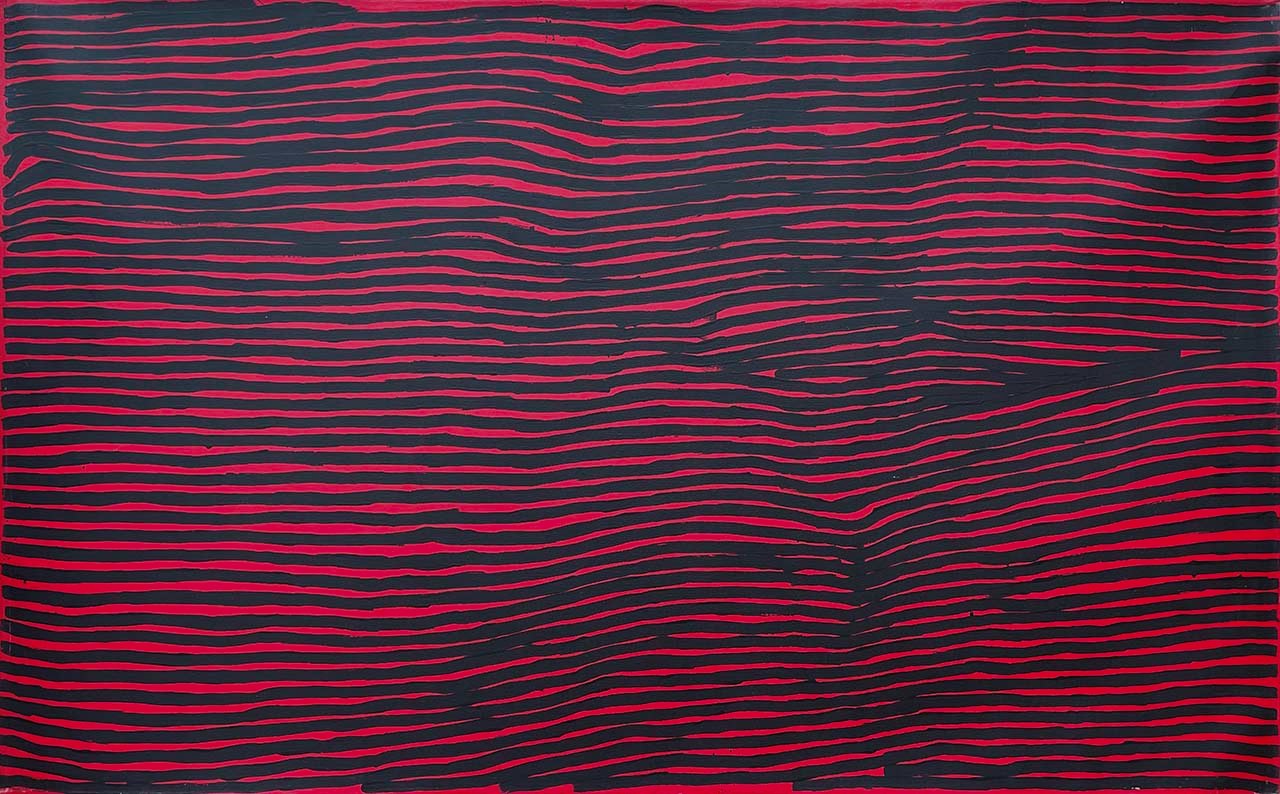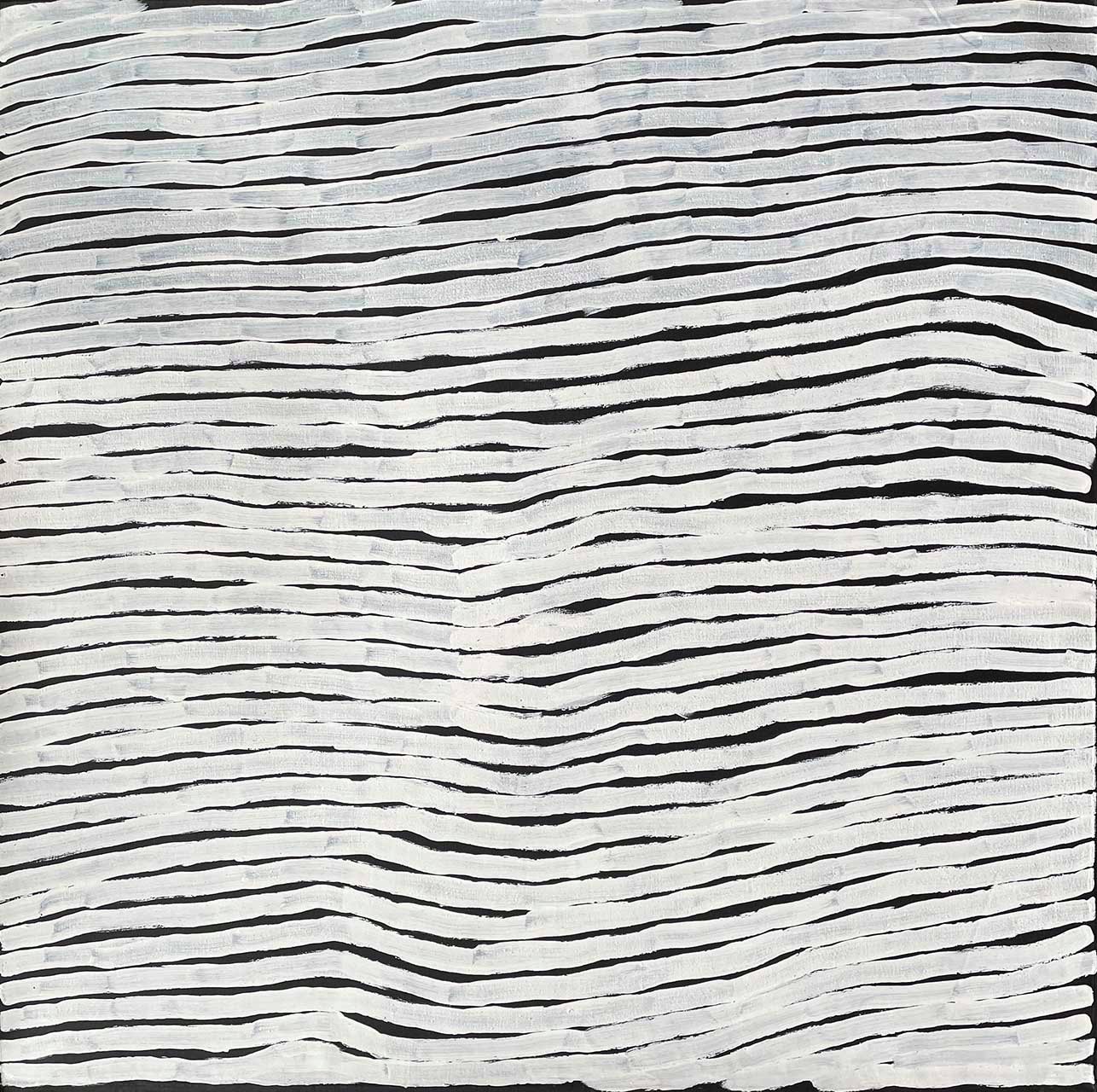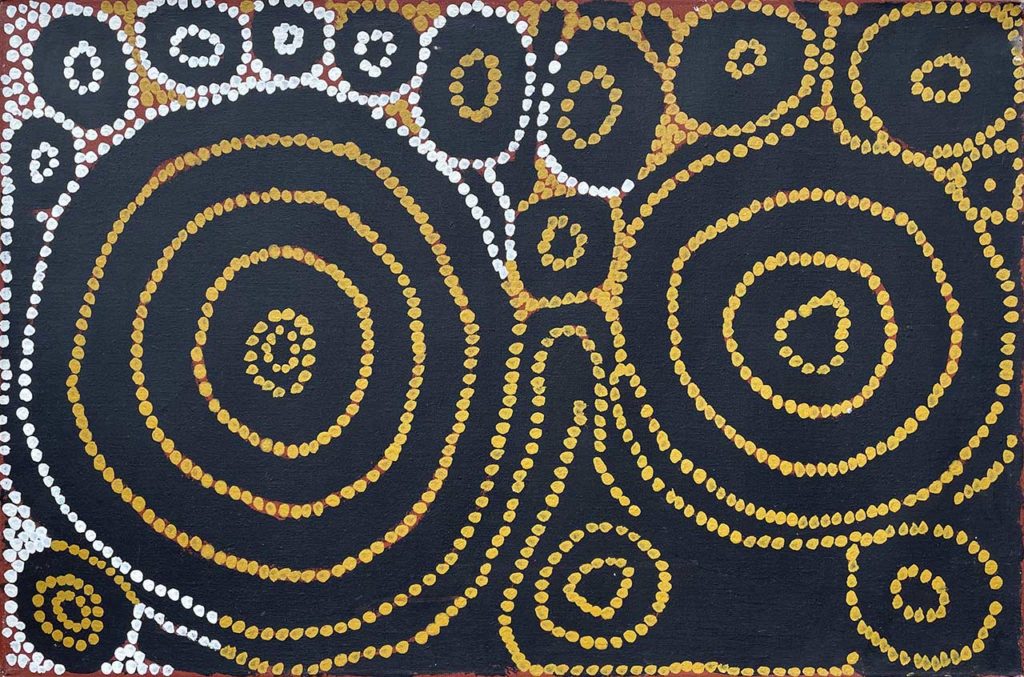Dr George Tjapaltjarri – Exhibition Walk Through
Japingka's Ian Plunkett, introduces the Dr George Tjapaltjarri retrospective. Exhibition curator David Wroth walks us through some of the highlights from the exhibition.
Exhibition Introduction by Ian Plunkett
How did this exhibition come about?
It was a bit like the Dorothy Napangardi retrospective we did. It all came out of my longstanding friendship with Roslyn Premont, who was a groundbreaking gallerist in Alice Springs. Ros started the gallery called Gallery Gondwana, which was really pushing and promoting Indigenous fine art rather than souvenir art to a wide ranging audience. Based in Alice Springs, the gallery promoted ethical dealing, respect for artists and respect for the culture.
Roslyn was working closely with several artists in the Alice Springs region, the most famous of which was Dorothy Napangardi, the late artist who is now one of our most famous artists. There were many other artists who worked out of the studio, one in particular was Dr George.
I met him with Roslyn when I was visiting her gallery. We were trying to set up a code of conduct for dealing with Indigenous art. Dr George was at the back of the gallery doing his work as a healer.
We didn't know he was there at the time. We just walked out there talking. Dr George was performing his healing process on a young man who had been speared in the leg at some point, and the wound had healed and closed over. He was still having problems with his leg.
Dr George paid no attention to us. We stayed in the background and just watched what he was doing. I've never really seen anything like it before or since. It's something like what you hear about with healers perhaps in Asia, where the healing is done by removing things from inside the leg but not actually breaking the skin. Yet blood is still present. It was an amazing process that we were very privileged to be able to see. At the end of it all, the young man was happy. His leg had full flexibility back. Paradoxically at the end of it all, Dr George, gave him an aspirin as well and said, "Here. Take this away with you." It was all finished, but that's always stayed with me. I've never seen anything like it.
I spoke to him not long afterwards, a short conversation. He talked about his art and how important it was to him, and a way of spreading his culture and his knowledge. Roslyn had collected an amazing collection of art by Dr George. He has several different styles of painting, some more optical, others more traditional in a way, but he brings his own artistic style to it. The power of his work has always stayed with me.
In late 2020 we were mounting a major Dorothy Napangardi retrospective, I mentioned to Ros about Dr George. We both recalled that time when we saw him doing the healing. I remember seeing some of the works that she had in her collection. I asked, "Would you be interested in doing a retrospective of his work as well?." He'd fallen a bit out of the limelight, and undeservedly so since he had passed because his work is distinctive. It has a real power and is backed by real knowledge and understanding of the law. I've always loved his work, and Ros thought it was a good idea.
Here we are a couple of years later with the privilege of having all these stunning paintings up on the wall. And if you walk into the gallery, it just blows you away. They are so striking and powerful, just great works of art.
So that's how it came about. It was just through a friendship and and Ros' fantastic knowledge and connections in Alice Springs.
Featured Work Top Right: Dr George Tjapaltjarri | Liru | Jap 019912


Exhibition Highlights with David Wroth
Dr George's theme is the very traditional nature of Tingari or Creation Ancestor stories that dominate culture. And many of the paintings belong to an aspect to the Tingari story that goes with men's initiation rights. Dr George calls this Malliera, and there's a number of paintings around the ceremonies and the processes that go on at that time.
We are standing in front of a work called Malliera Ceremonies. Dr George describes these as being rock holes and caves where the ceremonies took place. So those ceremonies are being described as places that are hidden away, often underground in caves near Jupiter Well. No doubt these were very hidden and sacred places where only men can go. So this painting is representing those hidden caves that were a very restricted ceremonial site. He is also talking about the rock holes that exist there. Groups would go there to carry out the ceremonies and that would be going on over a number of weeks. Dr George talks about revitalising the Tingari process that's part of his very strong connection to tradition. When it's expressed by a man of his significance, you get the impact of these very significant events.

One of the largest paintings in the exhibition is also about the men's and boys initiation ceremonies. These are directly coming out of the Tingari story. This is the Ancestors creating sites that become the sacred sites of Pintupi people. Dr George has created a number of linear designs. They're impulsive and they're very alive, they move. These designs are representing a number of things, including the fire sticks that the people use for light at night and in those underground ceremonial areas and for the markings that are put on the body. So these are the scarification signs of a male who has gone through the initiation ceremonies related to the Tingari cycle and to the important ceremonies of the people.

Here is another painting with the strong linear designs. The colours are significant in the paintings and the black and white linear paintings are more directly connected to the body decoration that happens in ceremonies. There is important use of red and white ochre in traditional culture and this shows up in the paintings, which are done later on by significant men like Dr George. The impact lies in the colour and the structure that for the artist representing the processes of the initiation rights.

This little painting is called Tingari Cycle. It feels as though it projects all the aspects of what is important in traditional Aboriginal society. It is the site and the location where contemporary ceremonies were taking place. It is also the timeless site where the Ancestors first made those activities and those actions that created the whole tradition that people have followed down through the ages. This is Dr George's condensed, powerful expression of what Tingari means to him and to his people.
